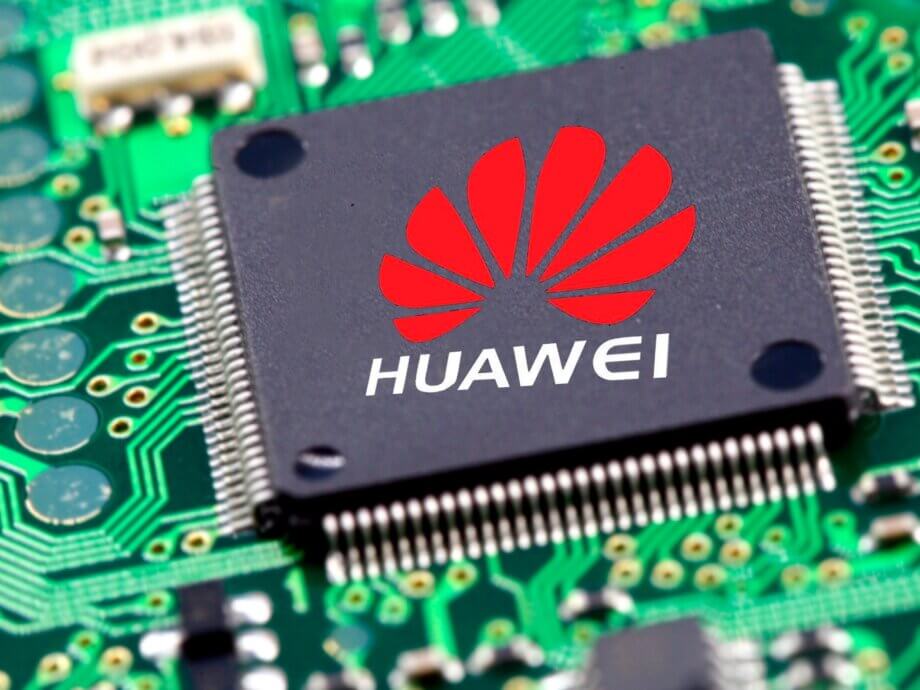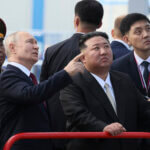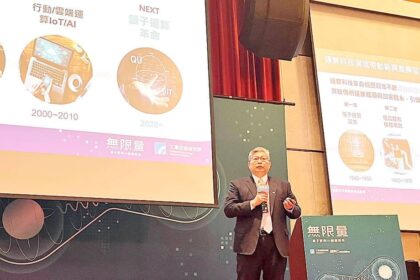Huawei’s Chip Technology: One Generation Behind, But Catching Up Fast
Huawei Technologies, China’s telecommunications and technology powerhouse, has found itself at the center of a global technology rivalry. In a rare and candid interview with the People’s Daily, Huawei founder and CEO Ren Zhengfei acknowledged that the company’s chips are still “one generation behind” those of its US competitors. Yet, Ren’s message was far from defeatist. Instead, he outlined a bold strategy for overcoming technological constraints, leveraging architectural innovation, and investing heavily in research to close the gap with the West.
- Huawei’s Chip Technology: One Generation Behind, But Catching Up Fast
- How US Export Controls Shaped Huawei’s Strategy
- Cluster Computing: Turning a Weakness into Strength
- Investing in the Future: Research, Talent, and Compound Chips
- AI Competition: Huawei vs. Nvidia and the Global Stakes
- Geopolitical Context: Trade Talks and the Global Chip War
- System-Level Innovation: Beyond the Chip
- Challenges and Trade-Offs: Power, Sustainability, and Global Reach
- Broader Implications: Innovation Under Constraint
- In Summary
This admission comes at a critical time, as US-China trade talks resume and Washington continues to tighten export controls on advanced semiconductor technology. The stakes are high: semiconductors are the backbone of modern computing, artificial intelligence (AI), and national security. Huawei’s response to these challenges offers a window into how China’s tech sector is adapting—and in some cases, thriving—under pressure.
How US Export Controls Shaped Huawei’s Strategy
Since 2019, the US government has imposed a series of export restrictions aimed at curbing China’s technological and military advancements. These measures have specifically targeted Huawei, cutting off its access to high-end chips and the equipment needed to manufacture them. The US alleges that Huawei’s equipment could be used for espionage by Beijing, a claim the company strongly denies.
These restrictions have forced Huawei to rethink its approach to chip design and manufacturing. Ren Zhengfei’s recent remarks mark the first time he or the company have publicly addressed their advanced chipmaking efforts. He emphasized that while Huawei’s single-chip performance lags behind US leaders like Nvidia, the company is finding ways to achieve competitive results through alternative methods.
Ren stated:
“Our single chip is still behind the US by a generation. We use mathematics to supplement physics, non-Moore’s law to supplement Moore’s law, and cluster computing to supplement single chips. The results can also achieve practical conditions. Software is not a bottleneck for us.”
Cluster computing—where multiple chips or computers work together to solve complex problems—has become a cornerstone of Huawei’s strategy. By linking many less advanced chips, Huawei can deliver performance that rivals or even surpasses that of more advanced single chips from US competitors.
Cluster Computing: Turning a Weakness into Strength
Huawei’s approach is a case study in innovation under constraint. Instead of relying solely on the raw power of individual chips, the company has focused on system-level solutions. In April 2025, Huawei launched the AI CloudMatrix 384, a system that connects 384 Ascend 910C chips in a cluster. According to analysts, this setup can outperform Nvidia’s GB200 NVL72 system on certain metrics, despite each Ascend chip being less powerful than Nvidia’s top offerings.
This “brute force” method comes with trade-offs. The CloudMatrix system reportedly consumes about four times the power of comparable Nvidia systems, raising questions about long-term sustainability and operational costs. However, for many applications—especially in China’s vast domestic market—this approach is both practical and effective.
Ren’s emphasis on “mathematics to supplement physics” and “non-Moore’s law to supplement Moore’s law” reflects a philosophical shift. Moore’s law, which predicts the doubling of transistors on a chip every two years, has driven decades of semiconductor progress. But as physical limits are reached and export controls bite, Huawei is betting on architectural and mathematical innovation to keep advancing.
Investing in the Future: Research, Talent, and Compound Chips
Huawei’s annual research and development (R&D) budget is staggering: 180 billion yuan (about $25 billion). Ren revealed that roughly one-third of this is devoted to fundamental theoretical research, with the remainder focused on product development. This long-term investment is designed to build foundational capabilities, not just chase immediate commercial gains.
Ren explained:
“Without theory, there will be no breakthroughs, and we will not catch up with the United States.”
One area of particular promise is compound chips—semiconductors made from multiple elements rather than traditional silicon. These could potentially bypass some of the manufacturing constraints imposed by US export controls and open new avenues for performance improvements. Huawei has also patented techniques for stacking chiplets (small functional units) on top of each other, making processors smaller and more powerful.
Talent development is another critical focus. Ren and other Chinese industry leaders have pointed out that cultivating a new generation of engineers and researchers is essential for long-term success. China’s large population, robust power grid, and advanced communications infrastructure provide a strong foundation for this effort.
AI Competition: Huawei vs. Nvidia and the Global Stakes
The competition between Huawei and US chip giant Nvidia is emblematic of the broader US-China tech rivalry. Nvidia remains the global leader in AI chips, but US export restrictions have barred it from selling its most advanced products to China. This has created an opening for Huawei, whose Ascend series of AI chips now competes directly with Nvidia’s offerings in the Chinese market.
In May, the US Commerce Department issued new guidance warning that the use of Huawei’s Ascend chips anywhere in the world could violate US export controls. This move effectively attempts to isolate Huawei’s AI ecosystem globally, raising the stakes for both companies and their customers.
Nvidia CEO Jensen Huang has acknowledged the competitive threat posed by Chinese firms, stating:
“Chinese companies are very, very talented and very determined, and the export control gave them the spirit, the energy and the government support to accelerate their development.”
Analysts note that Huawei’s cluster-based approach allows it to deliver AI system capabilities that can match or even exceed Nvidia’s in certain scenarios. However, this comes at the cost of higher power consumption and potentially greater complexity in system integration.
Geopolitical Context: Trade Talks and the Global Chip War
Ren’s interview was published as US and Chinese officials resumed trade talks in London, with technology restrictions high on the agenda. The timing underscores the central role that semiconductors play in the broader US-China relationship. Both sides have used access to technology and critical materials—such as rare earth metals—as leverage in ongoing negotiations.
China has accused the US of “bullying” and “abusing export controls to suppress and contain” its firms. At the same time, some analysts argue that US restrictions have inadvertently accelerated China’s progress in chip technology by forcing domestic innovation and investment.
Ren’s comments also reflect a nuanced understanding of the global technology landscape. By downplaying Huawei’s achievements and emphasizing the need for continued hard work, he may be seeking to reduce geopolitical pressure while maintaining momentum at home.
System-Level Innovation: Beyond the Chip
Huawei’s experience highlights a broader trend in the technology industry: system-level innovation is becoming as important as advances in individual components. By focusing on how chips, software, and infrastructure work together, companies can achieve competitive performance even when they lack the most advanced hardware.
Ren predicted that AI will be “the last technological revolution of humankind,” alongside nuclear fusion as a clean energy source. He also noted that AI’s ultimate impact will be felt in sectors like power, infrastructure, coal, and pharmaceuticals, where domain-specific applications will drive future breakthroughs.
China’s “Eastern Data, Western Compute” initiative, which moves computing workloads to regions with abundant renewable energy, is one example of how the country is leveraging its infrastructure to support AI development. The government’s recent “Computing Power Interconnection Action Plan” aims to improve network interconnection and resource allocation across the country.
Challenges and Trade-Offs: Power, Sustainability, and Global Reach
While Huawei’s cluster computing approach has delivered impressive results, it is not without challenges. The higher power consumption of large chip clusters raises concerns about energy efficiency and operational costs. In the long run, sustainability will be a key factor in determining the viability of this strategy.
Moreover, the global reach of Huawei’s technology remains constrained by US export controls. The Commerce Department’s guidance that even the use of Huawei-designed chips could violate export rules is an unprecedented escalation, effectively attempting to isolate the company from international markets.
Despite these obstacles, Huawei is ramping up production capacity and targeting 700,000 Ascend chip shipments in 2025. The company’s focus on the domestic Chinese market, where demand for AI hardware is booming, provides a substantial customer base for its innovations.
Broader Implications: Innovation Under Constraint
Huawei’s journey offers important lessons for the global technology industry. Export controls, while effective in limiting access to cutting-edge technology, can also spur innovation in unexpected ways. By investing in fundamental research and exploring alternative approaches, companies can find new paths to competitiveness.
Ren’s rare public disclosure is a milestone in the global semiconductor competition. It reveals both the constraints and creative possibilities that arise when technological leaders face unprecedented challenges. Whether Huawei’s mathematical and architectural innovations will prove sustainable remains to be seen, but the company’s willingness to acknowledge its gaps while demonstrating system-level competitiveness suggests a mature approach to long-term competition.
In Summary
- Huawei’s chips are currently one generation behind US leaders like Nvidia, according to CEO Ren Zhengfei.
- The company is overcoming this gap through cluster computing, architectural innovation, and heavy investment in research.
- US export controls have forced Huawei to adapt, spurring domestic innovation and system-level solutions.
- Huawei’s AI CloudMatrix 384 system demonstrates how clusters of less advanced chips can rival or surpass more powerful US chips in certain applications.
- About one-third of Huawei’s $25 billion annual R&D budget goes to fundamental theoretical research, with a focus on long-term breakthroughs.
- Geopolitical tensions and trade talks continue to shape the global semiconductor landscape, with both the US and China using technology as leverage.
- Huawei’s experience highlights the importance of system-level innovation and the potential for progress under constraint.
- The future of AI hardware competition will depend on both technological advances and the evolving global policy environment.












